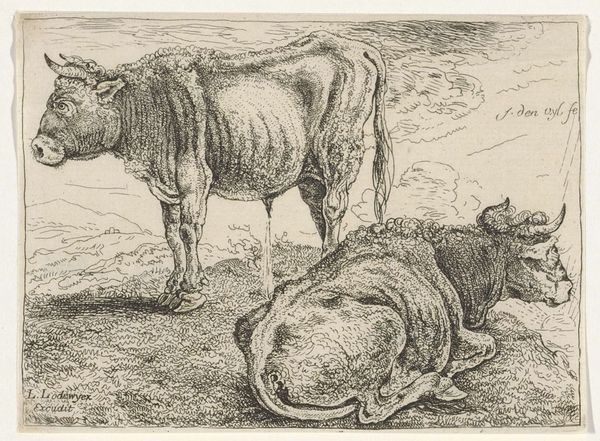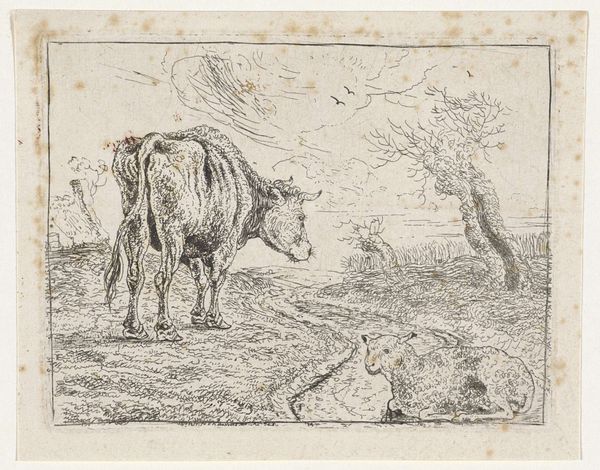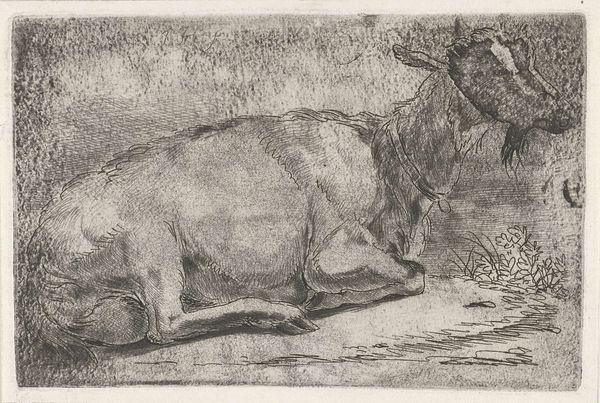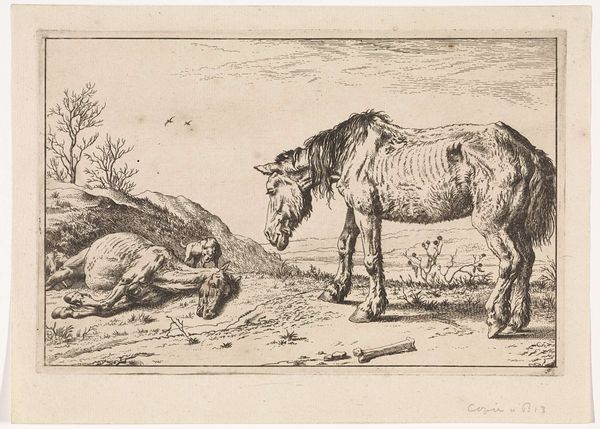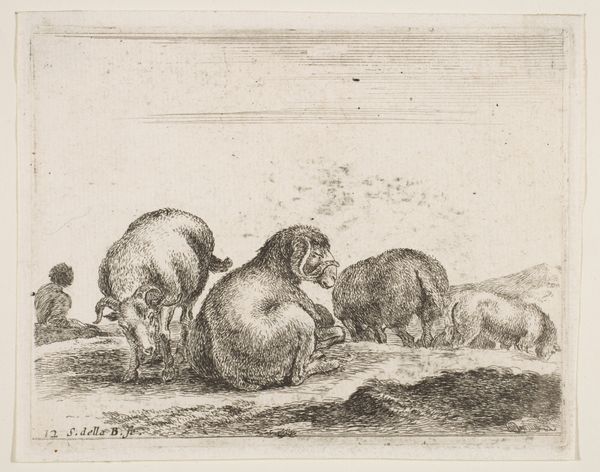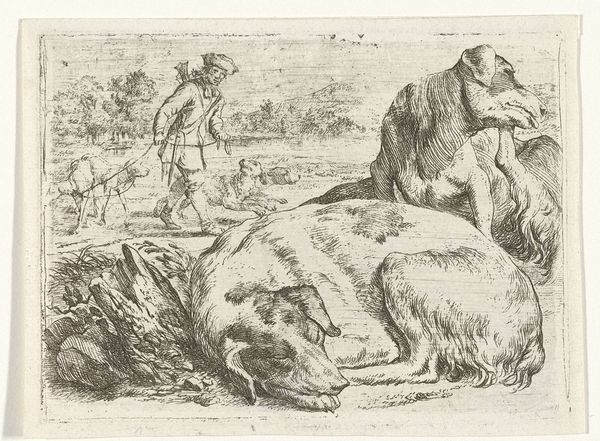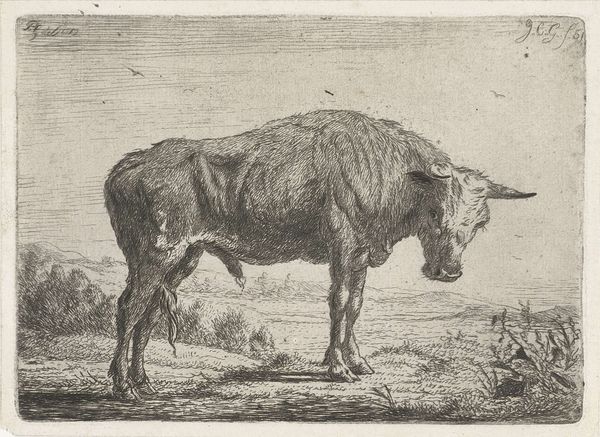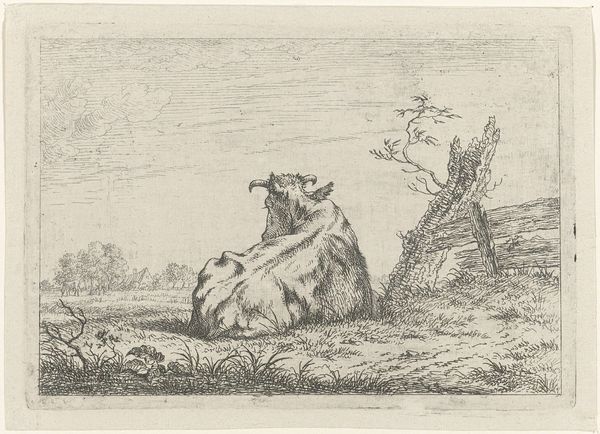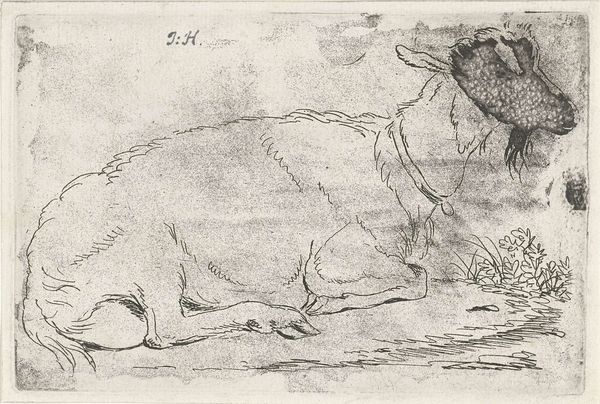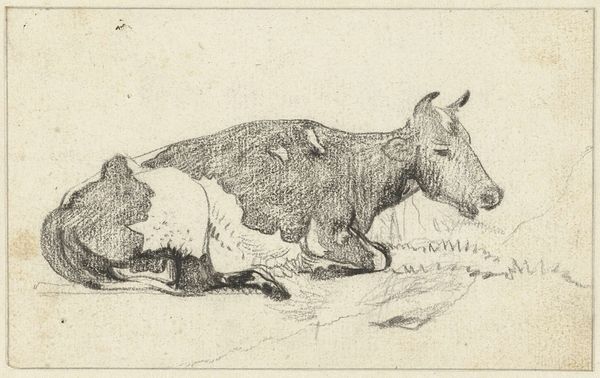
drawing, print, etching, paper
#
drawing
#
dutch-golden-age
# print
#
etching
#
landscape
#
paper
#
genre-painting
#
realism
Dimensions: height 97 mm, width 126 mm
Copyright: Rijks Museum: Open Domain
Editor: Here we have Jan Jansz. den Uyl's "Two Oxen," an etching on paper from 1654. There’s something quite serene about this simple scene of the animals in the pasture. What do you see in this piece? Curator: Beyond the tranquility, I'm struck by the socio-economic implications of depicting livestock in Dutch Golden Age art. Genre painting, such as this, often reflected the prosperity and values of the Dutch middle class. How does the rendering of these animals speak to ideas about wealth and status during that period, do you think? Editor: Well, their rather thin appearance could hint at a society still deeply tied to agriculture and animal husbandry, but not necessarily dripping in luxury, more about their relation with the wealth. Curator: Precisely! It acknowledges the labor required to create capital, not merely displaying the outcome. And consider the choice of etching. Its accessibility democratized image production, making art like this available to a wider audience than, say, oil paintings commissioned by the elite. Isn’t that an interesting commentary on the dissemination of values? Editor: Definitely! So, this seemingly simple pastoral scene has a lot to say about 17th-century Dutch society. I had no idea. Curator: It makes you think, doesn’t it, how something as straightforward as depicting oxen could reflect complex social dynamics! Editor: Absolutely. It challenges my initial impression and helps me see this art with a wider, more informed perspective. Curator: And it prompts us to reflect on how institutions can shape the very narrative around simple artwork.
Comments
No comments
Be the first to comment and join the conversation on the ultimate creative platform.
